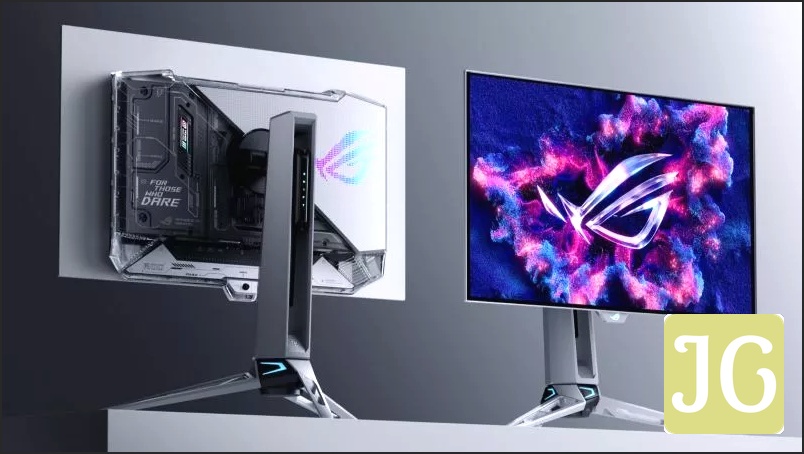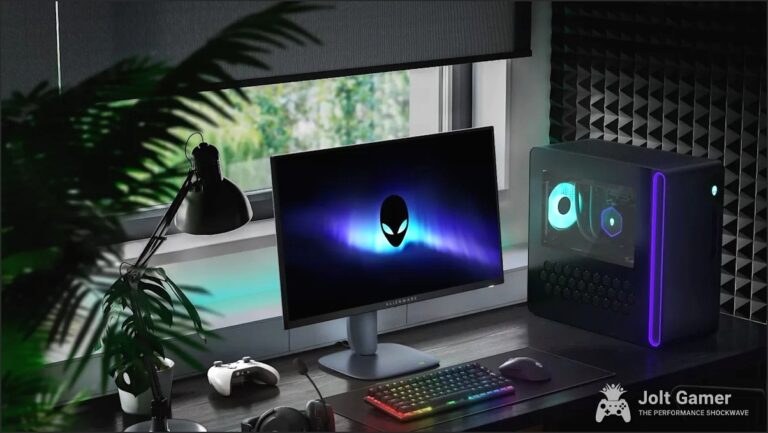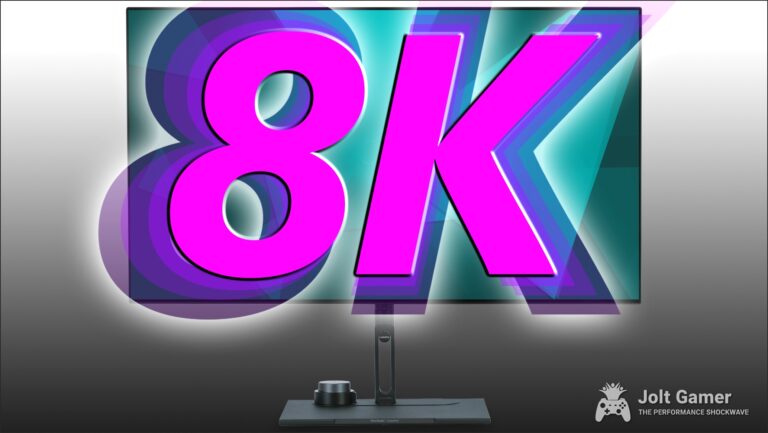The Next Frontier: ASUS ROG‘s Bold OLED Vision at Gamescom 2025
Gamescom 2025 marked a pivotal moment for high-performance displays as ASUS Republic of Gamers (ROG) unveiled a groundbreaking lineup of OLED gaming monitors. These releases firmly reassert ROG’s global leadership in the OLED gaming monitor segment. Headlining the showcase are the ROG Swift OLED PG27AQWP-W and the ROG Strix OLED XG27AQWMG, complemented by the refined ROG Strix OLED XG27AQDMG Gen 2. Far from mere iterative updates, these displays represent a significant “leveling up” for ROG’s monitor technology, integrating advanced Tandem WOLED panels and a comprehensive suite of innovations. Their collective aim is to redefine gamer expectations, pushing the boundaries of visual fidelity, speed, and – crucially – long-term reliability.
Key Takeaways
- Tandem WOLED Technology: New dual-layer OLED panels deliver up to 15% brighter output, 25% wider color volume, and 60% longer lifespan, directly combating traditional OLED limitations.
- Unprecedented Speed: Flagship PG27AQWP-W offers dual-mode refresh rates: 540Hz at 1440p and an astounding 720Hz at 720p, paired with a 0.03ms GTG response time.
- Burn-In Solved? ASUS OLED Care Pro, custom heatsinks, HDR-optimizing firmware, and an advanced Neo Proximity Sensor aim to virtually eliminate burn-in risk, backed by a 3-year warranty.
- TrueBlack Glossy Coating: A new display coating ensures deep blacks and suppresses glare, making these OLEDs effective even in bright environments.
- Robust Connectivity: Features like DisplayPort 2.1a UHBR20 (80Gbps) and HDMI 2.1 ensure future-proof bandwidth for high-resolution, high-refresh gaming.
The OLED Dilemma: Addressing Community Fears Head-On
For years, the allure of OLED’s perfect blacks, infinite contrast, and near-instant response times has captivated the PC gaming community. Yet, this undeniable visual superiority has consistently been overshadowed by a pervasive undercurrent of concern. The specter of burn-in, questions regarding long-term panel longevity, and a widespread perception that the technology is often “overhyped and overpriced” have tempered enthusiasm. ASUS ROG, acutely attuned to these sentiments and the empirical data behind them, has engineered its latest lineup to directly confront these challenges. Their objective is clear: to deliver the uncompromised, dream OLED experience that gamers seek, without the traditional drawbacks.
“Oled is quite over rated and overpriced considering the technology is vastly known for beiing flawed and unstable. but investers spent a lot of money on this tech so it is massively overhyped and even after so much customers complaining about theses problems, there is so much commercials and si much influencers getting payed to sell the tech regardless that.. it works. Internet is real sad sometimes.”
Tandem WOLED: The Dual-Layer Revolution for Brighter, Longer Lifespans
The foundational innovation powering the new ROG Swift OLED PG27AQWP-W and ROG Strix OLED XG27AQWMG is Tandem WOLED technology. This is not merely an incremental improvement; it’s a structural re-engineering. Unlike earlier single-layer OLED panels, Tandem WOLED integrates two distinct light-emitting layers that operate in concert. This dual-layer architecture yields substantial gains in both performance and durability. Specifically, it enables up to a 15% brighter peak output, pushing luminance to an impressive 1500 nits, which directly counters a common criticism of OLED brightness. Furthermore, it expands the color volume by 25% for richer, more immersive visuals, and extends the panel’s lifespan by a remarkable 60%. This longevity improvement significantly minimizes the risk of long-term brightness degradation and burn-in, all while consuming less power, showcasing a remarkable balance of efficiency and enhanced capability.
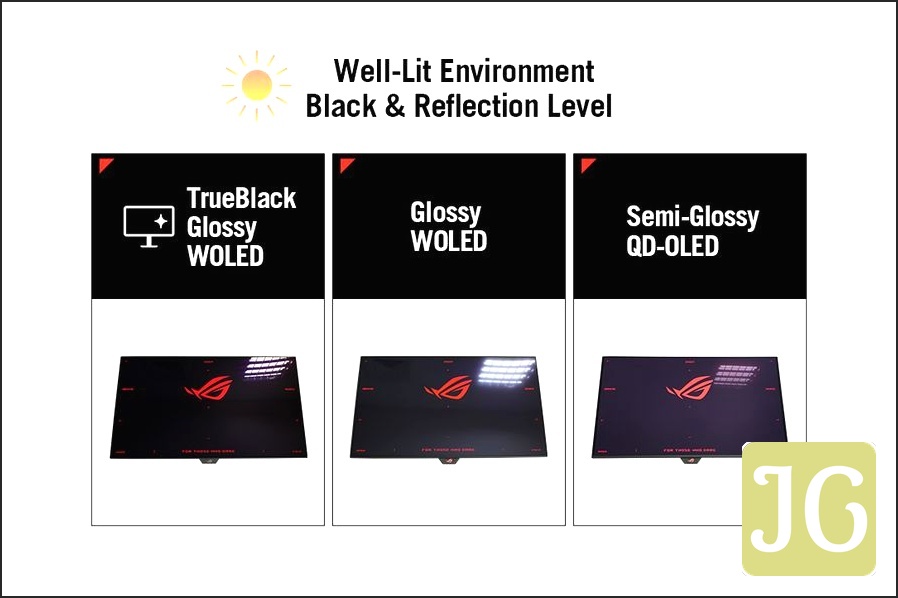
- Up to 15% Brighter: Achieving 1500 nits peak brightness, directly addressing a common OLED luminance concern.
- 25% Wider Color Volume: Delivering a broader spectrum of richer, more vibrant colors for enhanced visual immersion.
- 60% Longer Lifespan: Significantly minimizing the risk of long-term brightness degradation and the potential for burn-in.
- Reduced Power Consumption: More efficient operation, even with increased brightness capabilities.
- TrueBlack Glossy Coating: A zero-haze finish that actively suppresses glare and preserves the characteristic inky blacks of OLED, even in brightly lit environments.
Beyond Burn-In: ROG’s Multi-Layered Protection System
The most significant engineering effort by ROG, and perhaps the most critical for consumer confidence, resides in its multi-layered approach to burn-in prevention. The new OLED monitors seamlessly integrate the comprehensive ASUS OLED Care Pro suite. This includes custom heatsinks, engineered for optimal thermal management, alongside HDR-optimizing firmware and sophisticated Pixel Shift and ScreenSaver functions. The paramount innovation within this suite, however, is the Neo Proximity Sensor. This intelligent sensor precisely detects the user’s distance from the display. When a user steps away, the screen automatically dims or blacks out, effectively preventing static image retention. Upon return, content is instantly restored. This proactive, intelligent system drastically curtails the risk of burn-in, offering substantial peace of mind for long-term ownership and heavy use.
Confidence in Longevity: The 3-Year Warranty
ASUS is unequivocally backing its burn-in prevention claims with a robust three-year warranty for its new OLED monitors. This commitment from the manufacturer is a critical indicator of confidence in the longevity and durability of these advanced panels. For consumers who have harbored understandable worries about long-term panel degradation, this warranty offers a significant, tangible reassurance, directly addressing a core aspect of historical OLED skepticism.
The New Vanguard: ROG’s 2025 OLED Monitor Lineup
ASUS ROG 2025 OLED Gaming Monitor Lineup: Key Specifications
| Feature | ROG Swift OLED PG27AQWP-W | ROG Strix OLED XG27AQWMG | ROG Strix OLED XG27AQDMG Gen 2 |
|---|---|---|---|
| Panel Size | 26.5-inch QHD (2560×1440) | 26.5-inch QHD (2560×1440) | 26.5-inch QHD (2560×1440) |
| Panel Technology | Tandem WOLED | Tandem WOLED | WOLED (Gen 2) |
| Refresh Rate | 540Hz (QHD) / 720Hz (720p HD) | 280Hz (QHD) | 240Hz (QHD) |
| Response Time (GTG) | 0.03ms | 0.03ms | 0.03ms |
| Peak Brightness | 1500 nits (VESA DisplayHDR 500 True Black) | 1500 nits (VESA DisplayHDR 500 True Black) | VESA DisplayHDR 400 True Black |
| Color Gamut | 99.5% DCI-P3 | 99.5% DCI-P3 | 99% DCI-P3 |
| Color Depth | True 10-bit | True 10-bit | True 10-bit |
| Color Accuracy | Delta E<2 | Delta E<2 | Delta E<2 |
| Coating | TrueBlack Glossy™ | TrueBlack Glossy™ | TrueBlack Glossy™ |
| Burn-In Protection | OLED Care Pro (Neo Proximity Sensor) | OLED Care Pro (Neo Proximity Sensor) | OLED Care Pro (Neo Proximity Sensor) |
| Connectivity | DP 2.1a UHBR20 (80Gbps), HDMI 2.1, USB Hub | DP 1.4 (DSC), HDMI 2.1, USB Hub | DP 1.4 (DSC), HDMI 2.1, USB Hub |
| Stand Design | Stylish silver, half-transparent back, tripod socket | 30% smaller compact stand, tripod socket | 30% smaller compact stand, tripod socket |
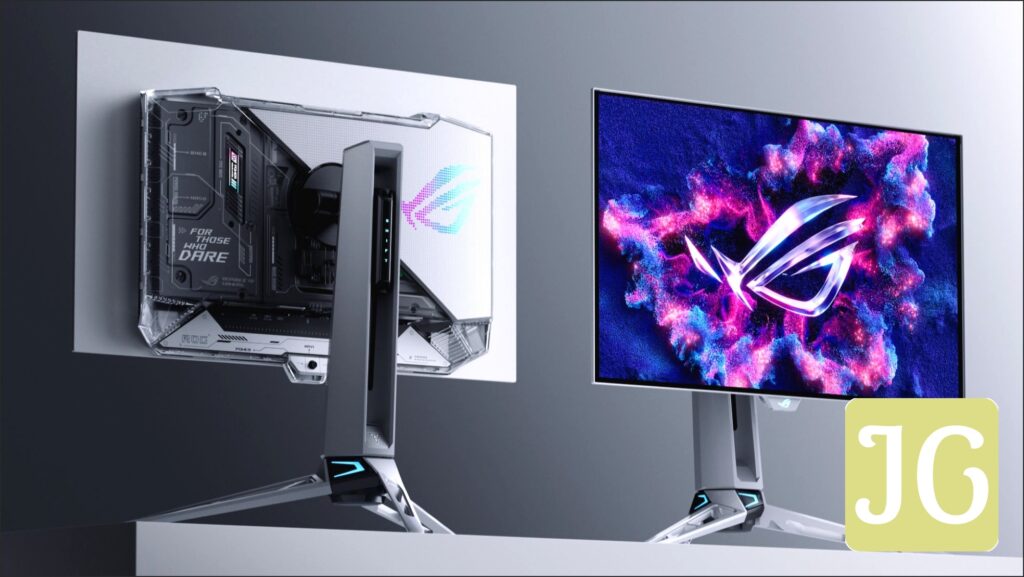
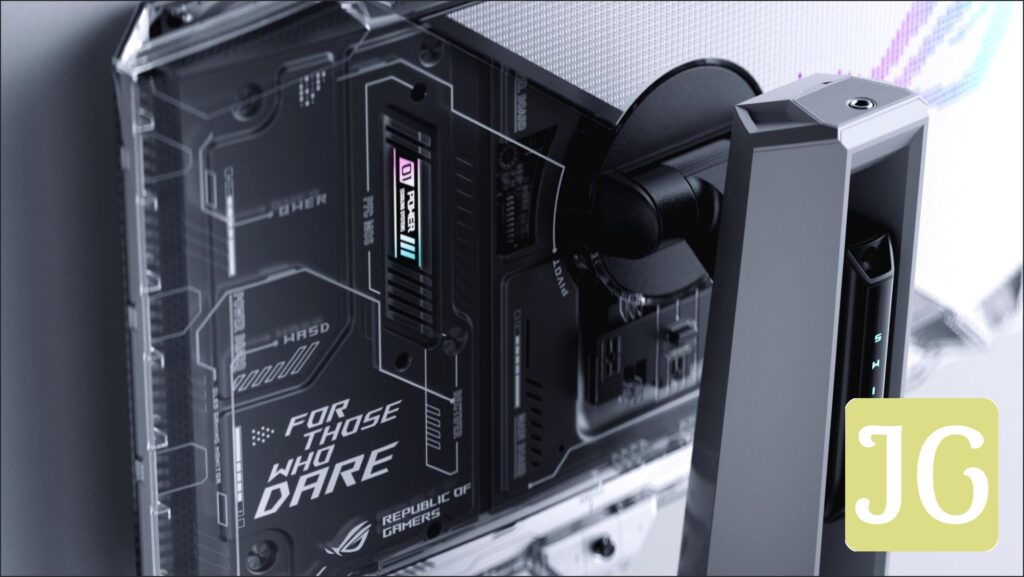
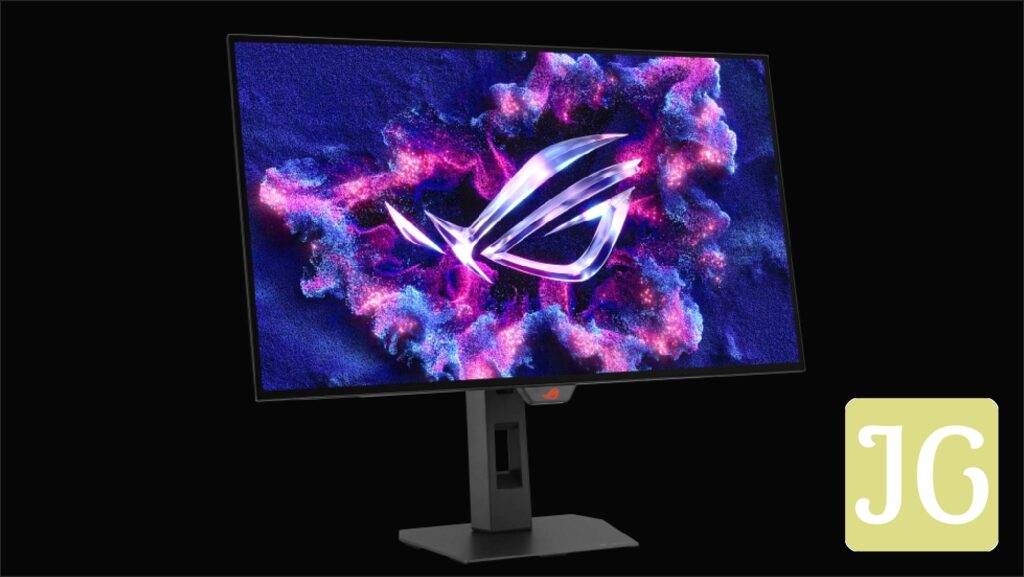
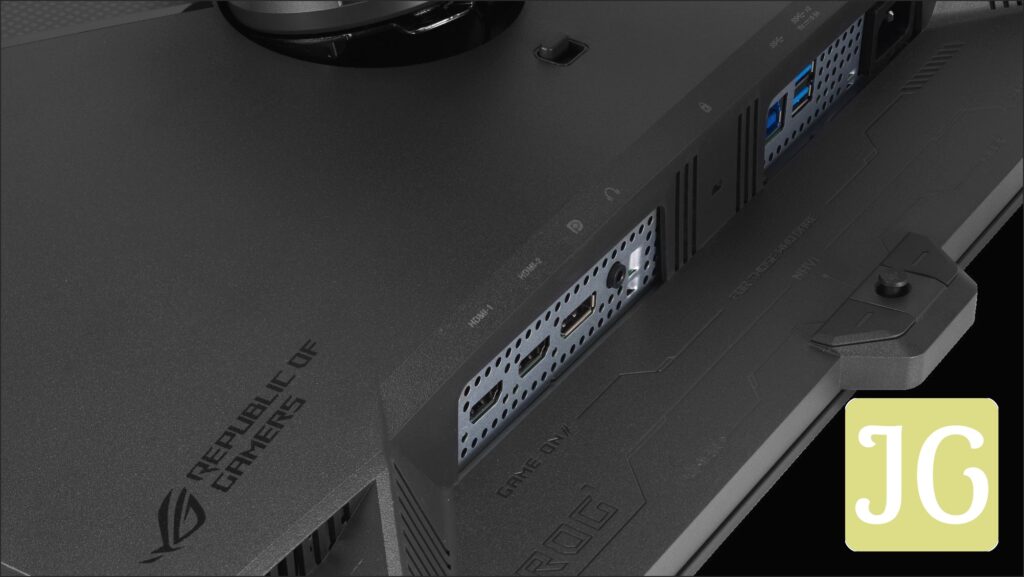
ROG Swift OLED PG27AQWP-W: The World’s Fastest (720Hz!)
The ROG Swift OLED PG27AQWP-W unequivocally positions itself as ROG’s flagship, boasting a native 540Hz refresh rate at its QHD (2560×1440) resolution. However, its most remarkable engineering feat is a dual-mode capability: users can switch to an unprecedented 720Hz refresh rate, albeit by adjusting the resolution down to 720p HD. This aggressive pursuit of speed, combined with a near-instant 0.03ms GTG response time, renders it an unparalleled tool for competitive esports where every millisecond translates to a tangible advantage. Connectivity is robust and future-proofed, featuring DisplayPort 2.1a UHBR20, which provides a massive 80Gbps bandwidth. This ensures seamless handling of these extreme frame rates and uncompromised HDR content, even as next-generation GPUs push performance further.
The Competitive Edge: How High Refresh Rates Impact K/D Ratio (NVIDIA Data)
Data from NVIDIA’s testing demonstrates a clear correlation between higher refresh rates and improved in-game performance, as measured by Kill/Death (K/D) ratios in competitive titles. Upgrading from 60Hz to 144Hz saw a 51% K/D boost, with a further 34% increase when moving from 144Hz to 240Hz. While specific data for 540Hz or 720Hz is not yet available, these trends highlight the tangible competitive advantage offered by the extreme refresh rates of ROG’s new OLED monitors.
The tangible benefits of such extreme refresh rates extend far beyond theoretical competitive advantages. In highly optimized esports titles like Counter-Strike 2, where modern mainstream GPUs can consistently push hundreds of frames per second, a monitor like the PG27AQWP-W ensures that every one of those frames translates into an incredibly fluid and responsive visual experience. This minimizes critical input lag, eradicates screen tearing, and provides an unerring, crystal-clear view of fast-paced action, giving players a decisive competitive edge. The PG27AQWP-W is engineered to fully leverage the capabilities of next-generation GPUs, such as the rumored RTX 5090, guaranteeing that the substantial investment in a high-end graphics card is perfectly mirrored on screen.
ROG Strix OLED XG27AQWMG & XG27AQDMG Gen 2: Performance & Practicality
Complementing the extreme performance of the Swift flagship, the ROG Strix OLED XG27AQWMG delivers a robust 280Hz refresh rate at QHD, maintaining the same ultra-fast 0.03ms response time and benefiting from the advanced Tandem WOLED technology. For gamers seeking a slightly more accessible entry point into high-performance OLED, the ROG Strix OLED XG27AQDMG Gen 2 offers a 240Hz QHD WOLED (Gen 2) panel, also with a 0.03ms response time. Both Strix models feature a redesigned, 30% smaller compact stand, a practical improvement that optimizes desk space without compromising stability. Crucially, they also include the full suite of OLED Care Pro features, ensuring that panel longevity and burn-in prevention are standard across the high-performance Strix line.
The Broader Landscape: ROG’s Place in the OLED Arena
ROG’s new lineup enters a display market characterized by rapid innovation and intense competition. LG.Display continues to push its WOLED panels, with 480Hz variants already in mass production, as seen in models like the Asus ROG Swift PG27AQDP. Concurrently, Samsung Display is aggressively developing QD-OLED technology, with credible rumors pointing to 27-inch 1440p 500Hz QD-OLED panels emerging in 2025. ROG’s strategic embrace of Tandem WOLED, combined with its robust, multi-layered burn-in prevention systems and extreme refresh rates, clearly positions it as a formidable contender. The consistent emphasis on TrueBlack Glossy coatings and high brightness across the new ROG range directly addresses and competes with the perceived advantages of QD-OLED in terms of color volume and luminance. This demonstrates a clear, data-driven intent by ROG to not only compete but to lead the premium gaming monitor segment.
The OLED Gaming Monitor Equation: Pros & Cons
Pros
- Unrivaled Response Time: Near-instant pixel transitions (0.03ms GTG) virtually eliminate motion blur, crucial for high-refresh gaming.
- Perfect Blacks & Infinite Contrast: Self-emissive pixels deliver true black levels and an unparalleled contrast ratio.
- Vibrant, Accurate Colors: High DCI-P3 coverage (99.5%) and true 10-bit color depth provide stunning, professional-grade visuals.
- Wide Viewing Angles: Image quality remains consistent and accurate from almost any perspective.
- Advanced Burn-In Protection: ROG’s Tandem WOLED and comprehensive OLED Care Pro suite, including the Neo Proximity Sensor, significantly mitigate traditional longevity concerns, backed by a 3-year warranty.
Cons
- Premium Price Point: OLED technology, especially at this performance tier, remains a significant investment compared to traditional LCDs.
- Lingering Perceived Burn-In Risk: Despite robust advancements, a segment of the community still harbors skepticism regarding long-term panel degradation, necessitating clear communication and proof of durability from manufacturers.
- Glossy Coating Preference: While TrueBlack Glossy™ significantly improves glare suppression, some users may still prefer the diffused nature of a traditional matte finish.
Purchase Information: ASUS ROG Swift OLED PG27AQWP-W
Product Name: ASUS ROG Swift OLED PG27AQWP-W
Release Date: Anticipated Q4 2025 (as early as October)
Price Range: Estimated $1,099 – $1,299 USD
Where to Buy: Major electronics retailers, ASUS e-shop
ROG’s OLED Offensive: A New Era of Gaming Displays
With its latest lineup, ASUS ROG is not merely introducing new OLED monitors; it is issuing a definitive statement to the high-performance display market. The strategic integration of Tandem WOLED technology, paired with the comprehensive OLED Care Pro suite and the innovative Neo Proximity Sensor, directly addresses the long-standing concerns regarding burn-in and longevity that have historically shadowed OLED’s reputation. The flagship PG27AQWP-W, with its world-leading 720Hz (at 720p) and 540Hz (at 1440p) refresh rates, represents a true generational leap for competitive gaming, while the Strix models offer compelling, high-performance options that balance features and practicality. By tackling the “OLED Dilemma” head-on with robust technical solutions and a reassuring 3-year warranty, ROG is not only pushing the boundaries of speed and visual fidelity but is also actively rebuilding trust within a skeptical community. This is a bold, data-backed offensive that could indeed usher in a new era for gaming displays, solidifying ROG’s leadership in the premium segment.
Your Burning Questions Answered: ROG OLED Monitors
What is Tandem WOLED technology?
Tandem WOLED uses two light-emitting layers stacked together, allowing for higher brightness, increased color volume, and significantly extended panel lifespan compared to previous single-layer OLED designs. It also contributes to lower power consumption.
Does the ROG Swift OLED PG27AQWP-W really do 720Hz?
Yes, but with a clarification: the PG27AQWP-W offers a dual-mode feature. It achieves its native 540Hz at 2K (1440p) resolution, and can reach an astounding 720Hz by scaling down the resolution to 720p HD. This is designed for competitive gamers who prioritize maximum refresh rate over resolution in specific scenarios.
How does ASUS prevent OLED burn-in?
ASUS implements a comprehensive suite called OLED Care Pro, which includes custom heatsinks, HDR-optimizing firmware, Pixel Shift, ScreenSaver functions, and an advanced Neo Proximity Sensor. The sensor intelligently detects user presence, dimming or blacking out the screen when you step away to prevent static image retention. These measures, combined with the inherent durability improvements of Tandem WOLED, are designed to significantly mitigate burn-in risk.
What is the TrueBlack Glossy coating?
The TrueBlack Glossy coating is a new display finish that provides a zero-haze look, suppresses glare, and ensures that the deep, inky blacks characteristic of OLED panels are retained even in brighter room lighting conditions. This improves image clarity and contrast in various environments.
What kind of warranty does ASUS offer for these new OLED monitors?
ASUS provides a comprehensive three-year warranty for its new OLED gaming monitors, which includes protection against burn-in. This demonstrates the company’s confidence in the longevity and durability of its advanced OLED panels.
Sources
- ASUS ROG Official Gamescom 2025 Announcements
- The Verge (referenced in Story Bible)
- guru3d.com (referenced in Story Bible)
- TFT Central (referenced in Story Bible)
- etnews.com (referenced in Story Bible)
- NVIDIA (K/D ratio data referenced in Story Bible)
- LG.Display & Samsung Display roadmaps (referenced in Story Bible)

